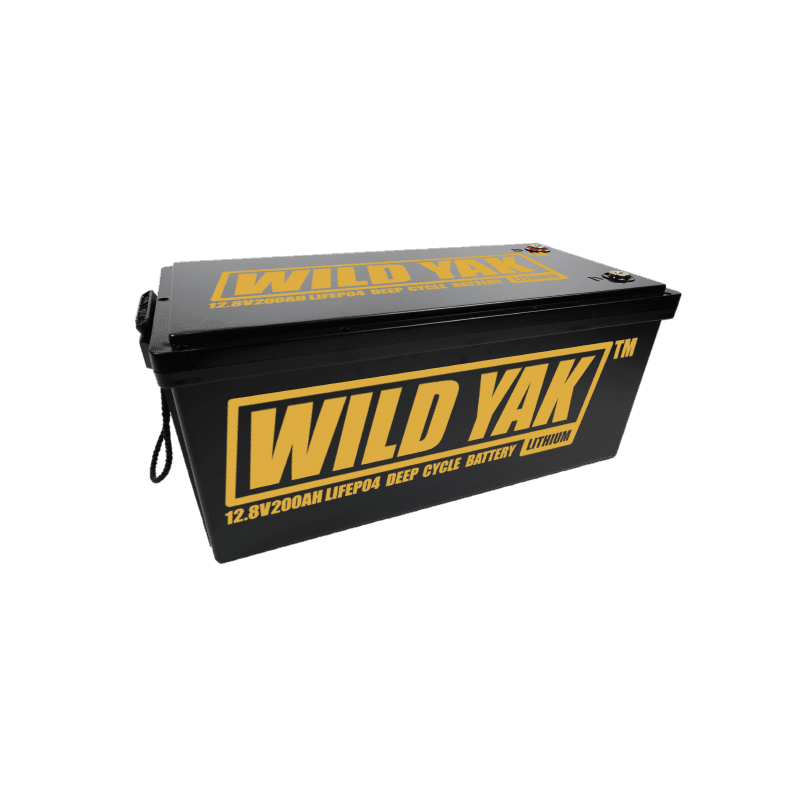How to Wire a Lithium Battery for a 24V Trolling Motor: A Step-by-Step Guide by Wild Yak Battery
Introduction
Properly wiring your lithium battery for a 24V trolling motor is crucial for ensuring optimal performance and safety on the water. Whether you’re upgrading your current setup or building a new one, understanding the wiring process is essential. In this guide, we walk you through how to wire a lithium battery for a 24V trolling motor using practical, easy-to-follow steps. We’ll also highlight how Wild Yak Battery’s advanced lithium solutions—featuring the 12V 100Ah, 12V 200Ah, and 24V 100Ah models—are designed to deliver exceptional power and reliability for your marine adventures.
Why Choose Lithium Batteries for Trolling Motors?
Before diving into the wiring steps, it’s important to understand why lithium batteries are an excellent choice for your trolling motor:
- High Energy Density: Lithium batteries provide more power in a lighter, more compact package compared to traditional lead-acid batteries.
- Extended Cycle Life: With thousands of charge-discharge cycles, lithium batteries offer long-term performance and reduced maintenance.
- Fast Charging: Rapid charging capabilities mean less downtime and more time on the water.
- Stable Voltage Output: Consistent power delivery ensures your trolling motor runs smoothly even under varying load conditions.
Tools and Materials You’ll Need
- Lithium Battery: Preferably a 24V model like Wild Yak Battery’s 24V 100Ah, or a combination of two 12V models wired in series.
- Trolling Motor: A 24V trolling motor compatible with your battery system.
- Cables and Connectors: Appropriately sized cables (gauge depends on current draw and cable length) and secure connectors.
- Fuse/Breaker: To protect the circuit from overload or short circuits.
- Multimeter: For testing voltage and ensuring correct connections.
- Battery Management System (BMS): Often built into modern lithium batteries for safety and performance monitoring.
- Wire Strippers and Crimping Tool: For preparing and securing cable connections.
- Screwdrivers and Wrenches: To secure connectors and mounting hardware.
Safety Precautions
- Disconnect Power: Always disconnect the battery from any power source before starting your wiring work.
- Wear Protective Gear: Safety glasses and gloves help protect you from sparks and accidental short circuits.
- Work in a Well-Ventilated Area: Ensure your work area is safe and free from flammable materials.
- Consult Your Manual: Follow manufacturer instructions for both the battery and trolling motor to avoid voiding warranties or causing damage.
Step-by-Step Wiring Instructions
1. Plan Your Setup
- Determine Configuration: For a 24V system, you can use a single 24V battery (like Wild Yak Battery’s 24V 100Ah model) or connect two 12V batteries in series.
- Layout Diagram: Sketch a simple wiring diagram to visualize the connections between the battery, fuse, and trolling motor. Ensure that the positive (+) and negative (–) terminals are clearly marked.
2. Prepare the Cables
- Select the Right Gauge: Choose cable gauge based on your trolling motor’s current draw and the distance between components.
- Strip and Crimp: Use a wire stripper to remove insulation from the ends of the cables and crimp connectors securely.
3. Connect the Battery in Series (if using two 12V batteries)
- Series Connection: Connect the positive terminal of the first 12V battery to the negative terminal of the second 12V battery. This series connection adds the voltage while keeping the capacity (Ah) the same.
- Verify Voltage: Use a multimeter to confirm that the combined voltage equals 24V before proceeding.
4. Install the Fuse or Circuit Breaker
- Positioning: Mount a fuse or circuit breaker close to the battery’s positive terminal. This component protects your wiring and equipment from overcurrent.
- Connect the Fuse: Attach the fuse holder to the cable leading from the battery’s positive terminal.
5. Wire the Battery to the Trolling Motor
- Positive Connection: Run the cable from the fuse to the trolling motor’s positive input.
- Negative Connection: Connect the battery’s negative terminal directly to the trolling motor’s negative input. Ensure all connections are tight and secure.
- Double-Check Polarity: Incorrect polarity can damage the motor or battery, so verify that the positive and negative wires are connected correctly.
6. Final Inspection and Testing
- Secure All Connections: Ensure all connectors, clamps, and mounting hardware are properly tightened.
- Test with a Multimeter: Check the voltage at the trolling motor’s input to ensure it reads close to 24V.
- Power On: Once verified, reconnect your system and power on the trolling motor. Monitor for any irregularities during operation.
Wild Yak Battery: The Ideal Power Source
Wild Yak Battery’s products are engineered for rugged marine applications. Our 24V 100Ah model is designed specifically for high-demand applications like trolling motors, offering a perfect balance of power, efficiency, and safety. For versatile setups, our 12V 100Ah and 12V 200Ah models can be wired in series to achieve a reliable 24V system. With advanced battery management and rapid charging capabilities, Wild Yak Battery ensures your system stays reliable and efficient on every adventure.
Conclusion
Wiring a lithium battery for a 24V trolling motor doesn’t have to be daunting. With careful planning, the right tools, and adherence to safety precautions, you can upgrade your marine power system to enjoy the benefits of lithium technology. Whether you’re using a dedicated 24V battery or connecting two 12V models in series, following these steps will help you achieve a safe and efficient setup. Trust Wild Yak Battery to provide the high-performance power you need to keep your trolling motor—and your adventures—running smoothly.

